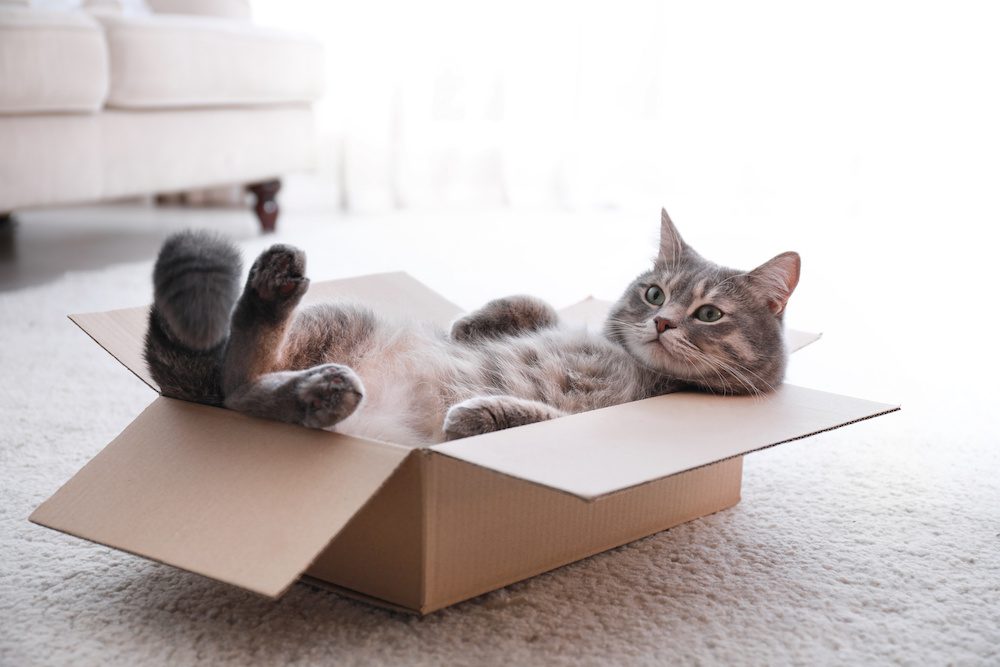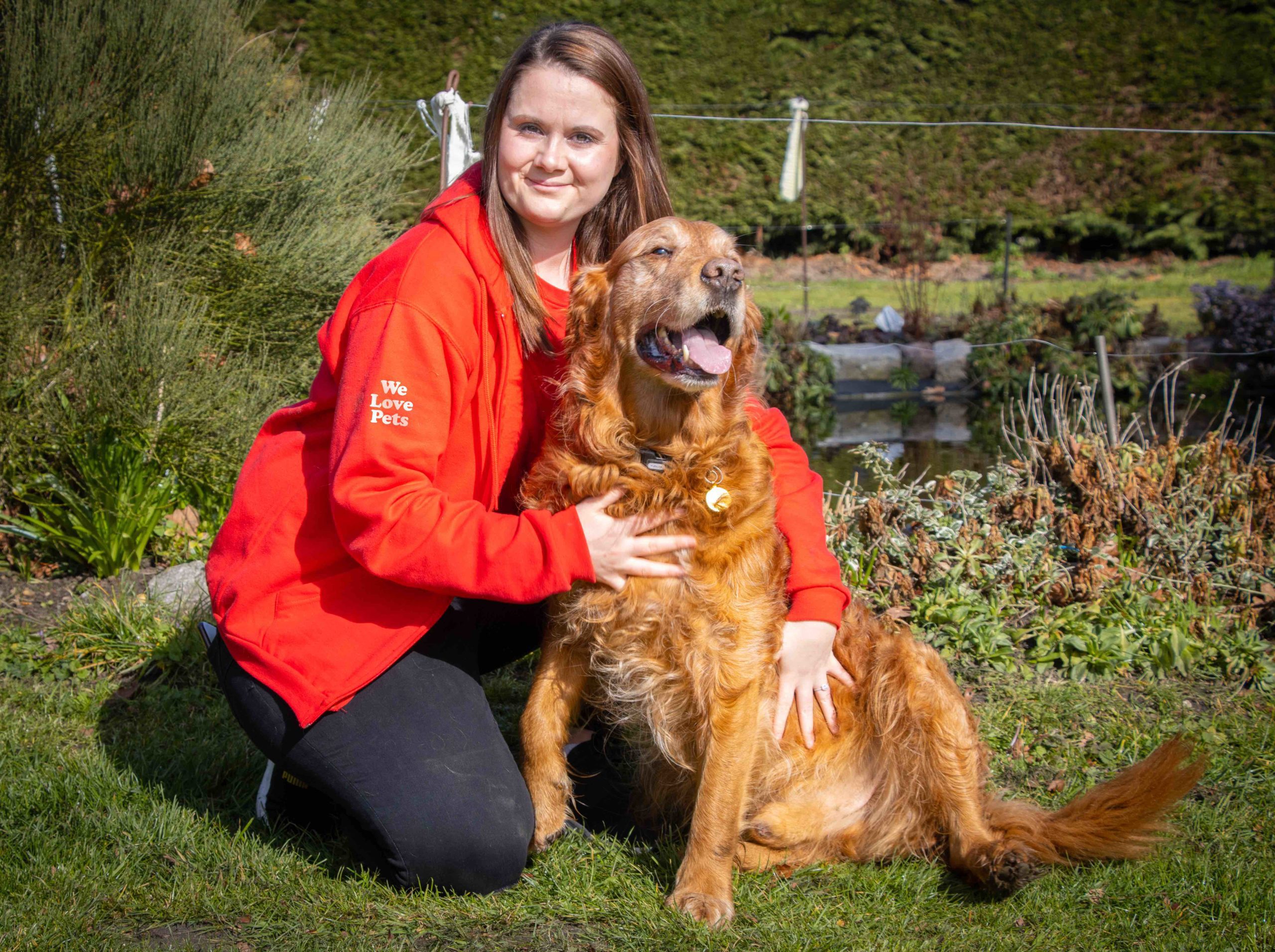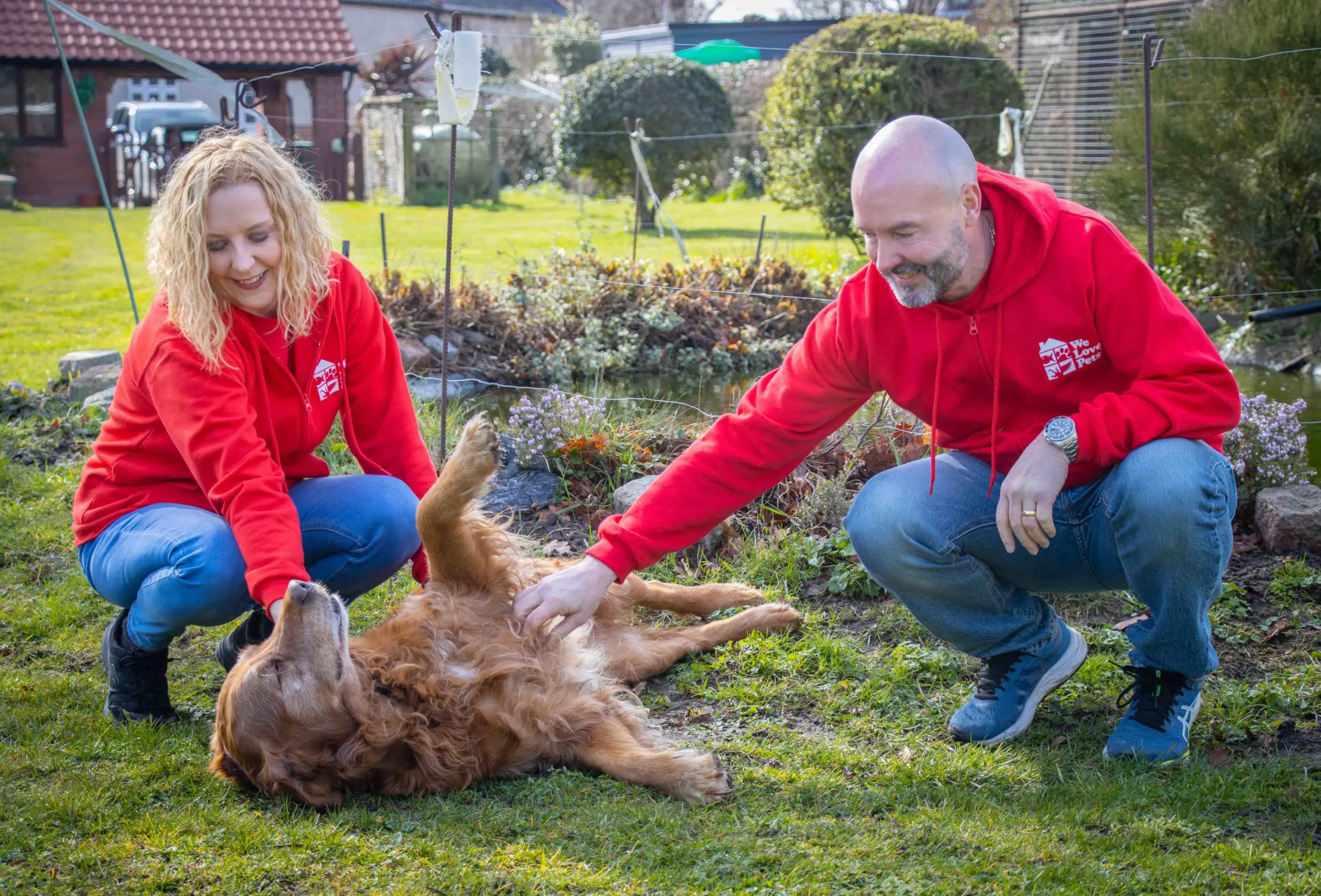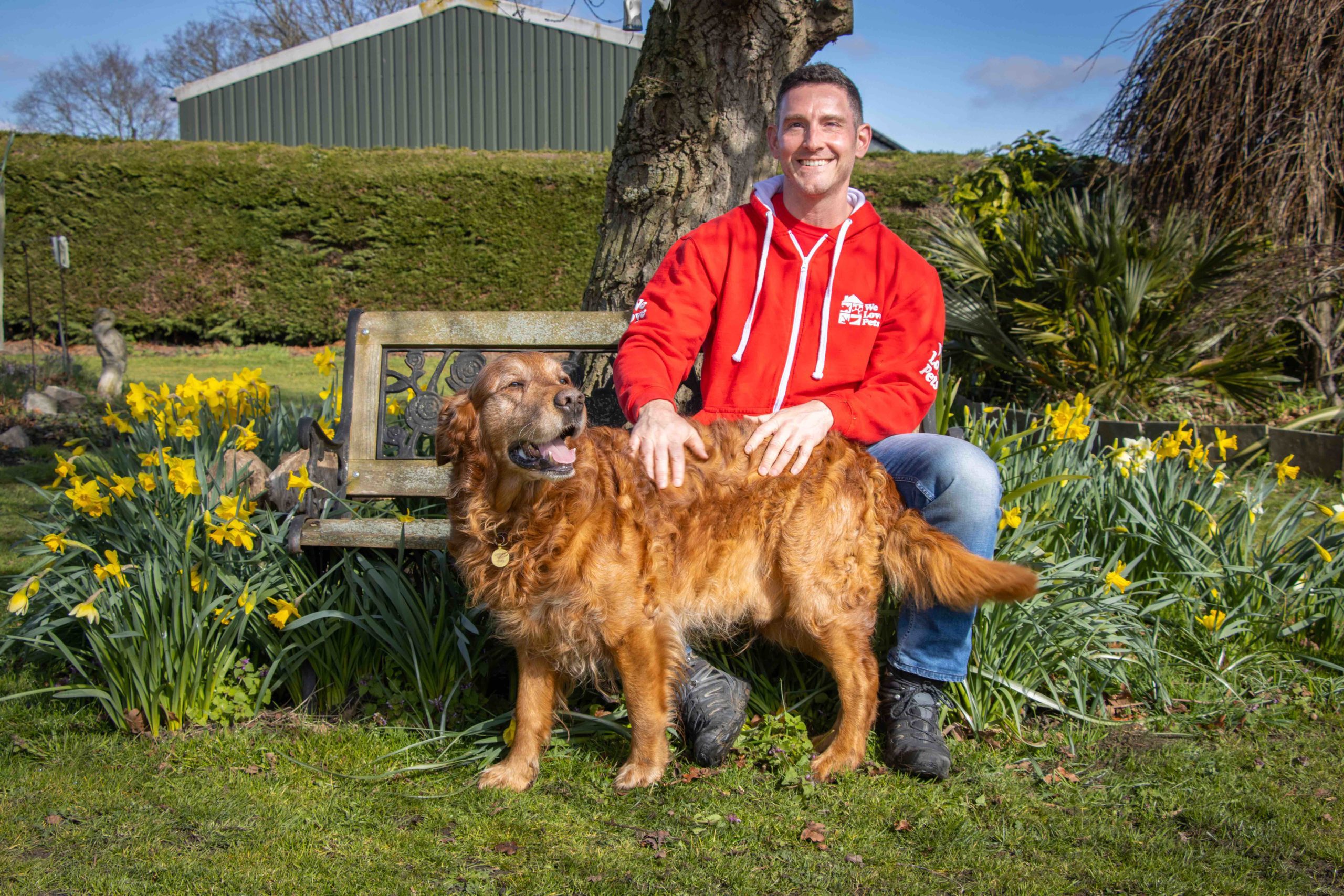Moving house can be such a thrilling time for you. The opportunity to start fresh, decorate and design your new living space, throw out everything weighing you down, and do things the way you want. Our pets like their routines and familiarity. They like to know when dinner is, where the best sunny spot is to curl up in, and if the furniture will still be there in a week!
Moving disrupts this familiarity and contentment that your pet will have built while living in one place, and depending on what their life has been like up to this point; it might be incredibly stressful for them. It is not unheard of for cats and dogs to go missing, only to show up at their old homes expecting to be let in because they simply don’t understand why they aren’t there anymore.
As a pet parent, you obviously don’t want to give your pet any reason to be scared or stressed, and there are some things you can do to ease the confusion of moving with a pet!
Before Moving
Pheromones
Many animals use pheromones, a chemical signal that they can use to communicate different things and mark areas as safe and secure. You can purchase plug-in diffusers, collars and sprays that release the scent of these pheromones that can help calm your pet down. Having these scents in the home while you’re packing will calm them down. Spraying them in the new house can help your dog or cat feel secure and safe even if they haven’t been there before.
Maintaining Routine
Your pet will be used to their daily routines, largely revolving around feeding times! Their routine gives them joy and all the things they need for survival! A disruption to this routine can severely worry your pet as they’re no longer certain when their meal times are coming. If you think about wild animals, they work hard for their meals, and when they can’t get them, they get antsy and begin to lash out. Your pet will likely do the same if their routines are changed, so while you are packing and readying yourself for the move, make sure to keep the routine the same for your pet. Feeding and playtime should exist even while you are thinking about the move.
You might want to consider making a “pet zone” that is set away from the chaos of packing and has their food and water and bed, so they have somewhere to go lay down when they are feeling stressed about the move.
Travelling
Does your pet like travelling? Sometimes being in the car can be very stressful for your pets, and if they don’t like it at the best of times, it won’t help lessen the stress of moving. Speak to your vet about advice on managing your pet’s discomfort in the car. It might be motion sickness, fear of the vehicle itself, or a whole host of other issues, and your vet will be able to help you find out what it is and how to help. They might be able to provide anti-nausea medication if it’s needed too, which will help if your pet gets a little motion sick. If you are moving abroad, make sure to have a look to see what paperwork is needed to travel with your pet, this will likely need to be done well in advance as it can take lots of time to sort out.
If you have a cat that doesn’t like its travelling box, put it out in the house for a few weeks in advance to get them used to it being around. They will likely associate its existence with unpleasant things, such as vet trips, so putting treats inside or spraying it with pheromone spray can help paint it more positively.
We have a blog on travelling with pets that you can check out for more advice!
Vet Registration
You should always register with the most local vet; even if your current one isn’t too much of a drive from the new house, a closer one will be better in case of an emergency. Registering at your local vet as soon as possible can ease the stress should an accident happen when moving. With lots of open doors, unfamiliar environments and new things happening, it can be very easy for accidents to happen, so know where your local practice is!
Microchip Details
A day or so before moving day, make sure that you change the address on your pet’s microchip and ensure that your contact details are correct. While you’re moving boxes and tidying things up, there will often be lots of opportunities for a scared pet to make a run for it, and with unfamiliar surroundings, it can be easy for them to get lost. Having an up-to-date microchip will help in getting them returned to you again. Collar details should be updated before your move too.
Cleaning the House
If the previous owners had a pet, your own might be able to smell them and feel very uncomfortable and stressed at the presence of another animal’s scent (particularly of an animal they can’t and won’t see). Thoroughly cleaning anything at your pet’s height can eliminate any residual pet scent, leaving the space ready for your smells! If you can get in to do this before your pet comes to the house, it will help them settle a little easier. You could rub a soft cloth around your pet’s face, then onto the furniture and cupboards at the new house to make them smell like home.
Garden Safety
Check that the new garden and the house itself are safe for your pet. When you view the house, you might consider small things like how close the roads are or what the fences are like in the garden, but you might not consider everything. Thoroughly inspect the garden for anything that might allow your pet to escape, such as gaps in walls or broken gates.
You should also look out for any poisonous plants that you might need to get rid of ahead of time. On that note, make sure that any “new home” flower gifts don’t contain any harmful flowers to your pets, such as lilies that are incredibly toxic to cats.
Moving Day
Leaving Pets Elsewhere
You might want to consider asking friends or family if they can take in your pet for a short time while moving and unpacking, so you don’t have to worry about keeping an eye on them the whole time. Your pets will pick up on your emotions, and no amount of preparation will stop you from being stressed during the move, and having your pet around during the process might add to the stress.
Safe Zone
Set up a space in the new house that is a safe zone for them, full of all their favourite toys, snacks and blankets. Leave that area alone for as long as possible until they feel more comfortable in the house; then, you can properly integrate those things into the house. Pack your pet’s belongings last, and set them up as soon as they are in the new place.
Reassurance
Being overly fussy on moving day will make them feel that something is up, which can sometimes have the opposite effect of what you want. They will, however, need reassurance. Make them feel comfortable that things aren’t wrong, just changing slightly. Reassure them that they are safe in their new environment.
Scent-Swapping
Scent is super essential to lots of animals and is the way they can identify an area as theirs. Bring blankets and cushions that smell like home into the new house to help them settle in.
Explore
When the house is secure and moved into, allow your dog to explore the new environment in their own time. Wandering around with them can reassure them that they are safe and sound- some pets will be a lot less confident than others, and being with you will make them feel secure.
After Moving
Accidents
A new home will be stressful, and no matter how hard you try, your pet will feel a little uncertain about moving; even the best toilet trained pet might have an accident or two while they’re still getting settled. Be patient with them, don’t raise your voice, and try revisiting their toilet training to get them back to being themselves. Anything new can be scary, so never add to that fear and risk scaring them away from you. If a pet is scared, it might lash out or bite, and something like that can ruin a relationship between animal and human.
Going Out
Cats need careful supervision when they are let out for the first time in a new house, as they are much less likely to stick to the garden. For at least three weeks, your cat should remain indoors, allowing them time to scent-mark the area and get used to calling it home. You can also sprinkle some used litter around the perimeter of the garden, pre-warning other cats that there is a new kitty on the prowl and making it smell more familiar when you let your cat outside. Let them out just before they are due food, so they will be much more likely to return inside, but don’t force them to go outside. Let them explore of their own accord. Leave the door open and see whether they want to venture out, but keep it open while they are out to let them return whenever they wish. Start with short trips, and build as they get more confident with their surroundings until you are happy they can come and go as they please.
Returning Home
Pets might want to return to an old home, cats more so than dogs, especially if you have not moved very far. Make sure to give the new owners of your old house your contact details, so they can get a hold of you if your pet tries to return home. Preventing that from happening might seem difficult, but it is possible by making sure that your new home is as pleasurable and exciting as possible. Making sure that you return to your typical routine as soon as possible, with regular feeding, grooming, and walking habits, will encourage your pet to forget their old home.




